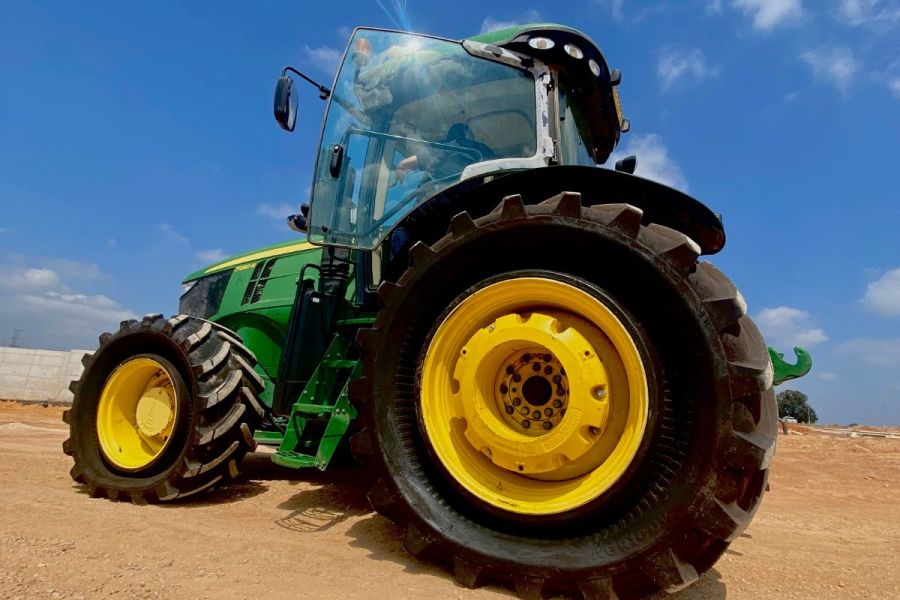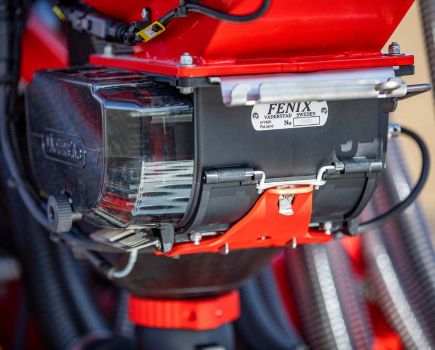It’s not very often a truly new tyre is invented, but every now and then someone thinks outside the box to bring about an evolution. CPM learns how a simple paper cup inspired an entirely new tyre design.
By Melanie Jenkins
A year doesn’t go by without a new innovation arriving in the tyre market, but it’s rare that one comes along that brings something entirely different to the scene. From tyres shaped like paper cups to others aimed at electric vehicles, below are some of the latest innovations to hit the market.
A cup revolution
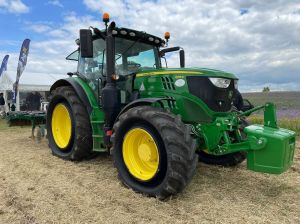
The CupWheel differs from conventional tyres because the V structure in the sidewall supports the lateral forces.
Imagine a paper cup. Now imagine it as a tyre. There doesn’t seem to be a link does there? Not many people could look at a paper cup and see a new form of tyre, but this is exactly what Avishay Novoplanski, the inventor of Galileo’s CupWheel did.
Before inventing the tyre, Avishay was working on stair climbing wheelchairs and reconnaissance robots that operated with combined wheels and tracks, but he then turned his attention to the physics of how the sidewall of a paper cut provides support for the entire structure. This then led to him transferring this idea to tyres which provide the benefits of both pneumatic tyres and rubber tracks.
Previously, tyre sidewall function had been focused on providing flexibility for comfort, explains Galileo’s Sameh Todd. “This meant that either the air or rubber inside the tyre was carrying the load. No one had thought of separating the function of the sidewall so that it could do something different,” he says.
According to the firms’s co-founder, Alon Hayka, the CupWheel doesn’t involve a new method of building a tyre, but instead it utilises physics in a different way to how it’s been used in tyres before. “Although it might look like a normal tyre, it works very differently. The tyre was created by taking two cones and merging them together, which allows for different forces to be at play.
“The first is the radial force which takes the load, either from the air pressure within the tyre, or alternately through the tyre’s structure including the sidewall,” he explains.
It’s this utilisation of the sidewall as a supporting force that’s completely unique to the CupWheel. In all other tyres, the sidewall has exclusively encased the pressurised air within the tyre, but in the CupWheel, because of the V structure of the sidewall, it’s able to carry the load.
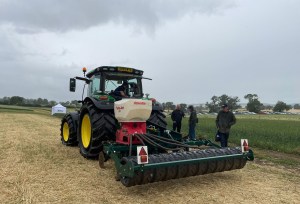
CupWheel tractor tyres will be launched in quarter four of this year, and will be available through Kirky tyres in the UK, with no modifications required for use on existing machinery.
“The second aspect at play is the lateral force which impacts the steering and stability on slopes,” explains Alon. “The cross-section of the tyre takes on a vital role here as it’s responsible for its lateral stability.
“In normal VF tyres, lateral stability is taken care of by the air pressure in the tyre. Lower air pressures are often used to reduce soil compaction, but this also causes the steering to wobble. As a result of lower air pressure, tyres lose their lateral stability.”
The CupWheel differs because the V structure in the sidewall supports the lateral forces, meaning they can operate at low pressure without compromising stability. “Due to this, tractors can be driven at full speed with tyres at lower air pressure without compromising safety and comfort,” says Alon.
The main feature of this technology, that allows it to provide better ground connection and traction, is that it provides a bigger and longer footprint. According to the firm, its footprint is 17% larger compared with standard tyres of the same size in field conditions.
The tyres are best operated at 0.4 bar in off-road conditions, whereas VF tyres can be practically used at 0.7 bar. And should a CupWheel tyre suffer a puncture, it can still operate without air pressure without compromising the traction. Once a puncture has been repaired and the tyre reinflated, it can be used again. Additionally, the difference between low pressure and nominal pressure is small, which together with the less volume allows for very fast inflation to nominal pressure.
According to the firm, machine weight is evenly distributed on the ground, and together with the larger footprint, this leads to lower ground pressure and soil compaction.
In literal terms, the tyre is two V shapes facing outwards – or two cups put end to end. As the down pressure increases on these the structure flexes from the edge, supporting the weight.
Sameh says the tyre’s structure can be useful for both the agricultural and construction industries. “In agriculture we can tackle the issues with tyre mobility for both irrigation and farming.”
The Israeli firm has already launched tyres that are available for use in irrigation. It’ll soon launch into construction where the tyres can run entirely airless to allow them to have the biggest footprint possible.
The second area of development for the firm has involved creating tractor tyres which will be launched in quarter four of this year, and will be available through Kirkby tyres in the UK, with no modifications required for use on existing machinery.
Initially, there’ll be an option of a 710/70R38CW rear tyre, and a 600/65R28CW on the front. This’ll be followed by a 710/70T42CW rear tyre and a 600/70R30CW front tyre. Next year, the firm will expand into skid steer and telescopic use.
Agrovista has hosted testing in the UK, and according to Sameh, the tyres have performed equally well on dry sandy soils as they have on heavy wet clays. “In muddy situations, the traction of the tyres is so important to minimise slippage. And on harder soils, the tyres can adapt to the shape of the terrane and absorb obstacles in front of them.
“Because the sidewall doesn’t press outwards, it won’t suffer from pinching when working in dry, hard soil situations,” he concludes.
Powering up
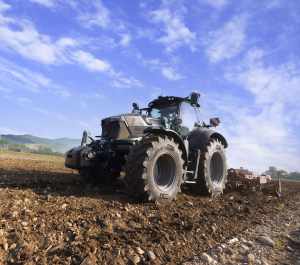
BKT has launched its first electric vehicle-specific tyre, with the E-Ready logo debuing on the firm’s AgriMaxFactor tractor tyre.
The drive towards electrification isn’t slowing down in agriculture, and to meet this growing area, BKT has launched its first electric vehicle-specific tyre. The E-Ready tyre made its debut at Sima back in November 2022, on the firm’s AgriMaxFactor tractor tyre.
A number of characteristics were considered to produce a tyre capable of effectively working with electric vehicles, including weight, engine structure, range and noise. According to the firm, electric vehicles can weigh up to 30% more than those with combustion engines, which can affect the work capacity of the tyres. Meaning a requirement for greater stress resistance and thus a more robust structure, starting with reinforced belts and casing and a different and specific sidewall and bead design.
Electric vehicles also move differently because their engine means they’re able to hit maximum power immediately, resulting in faster and more intense load shifts which in turn affects the wear of the tyres. Therefore, electric vehicle tyres are able to withstand higher drive torque.
To withstand great acceleration from the electric motor’s thrust to the mechanical transmission, BKT has resisted the tyre’s bead structure to provide better grip on the rim. Tread has also been altered, both in terms of design and compound.
Additionally, electric vehicles are designed for energy saving, and therefore the firm aims to provide a tyre that doesn’t affect energy consumption. Elements such as rolling resistance can contribute as much as 20% to a vehicle’s energy consumption, so in order to adjust rolling resistance without compromising other performance features, the firm has adjusted the tread compound, pattern and sidewall structure.
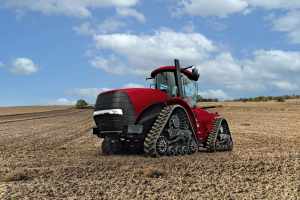
BKT has released its first rubber tracks for agricultural use, in the form of its AgriForce BK T71, suitable for high hp tractors employed in soil tillage and row crop applications.
The AgriMaxFactor tyre has been designed for both transportation and tillage operations and includes a number of features suited to electric vehicles, including increased lug length, and altered orientation and angle to help improve handling. Six polyester belts and four strong polyester plies aim to provide high stability at any speed.
The tyre was originally released in 600/70R30, 710/70R42 marked by the load index/speed symbol 173D, and 710/70R42 marked by the load index/speed symbol 176D, with twelve additional sizes released in this year.
A new track
Also at the end of 2022, BKT launched its first rubber tracks for agricultural use, in the form of its AgriForce BK T71. The tracks are suited for use on high hp tractors employed in soil tillage and row crop applications.
Made using a high-performance compound, the tracks are designed to be resistant to cuts, wear and tear, while the track carcase has been reinforced with four layers of high-tensile steel cords. According to the firm, the tread pattern is designed to provide good traction along with ride comfort, and drive lugs of the positive drive system have been shaped to ensure flexibility.
The AgriForce BK T71 was originally launched in 12x6x44, with four additional sizes in development for future release.
This article was taken from the latest issue of CPM. For more articles like this, subscribe here.
Sign up for Crop Production Magazine’s FREE e-newsletter here.

